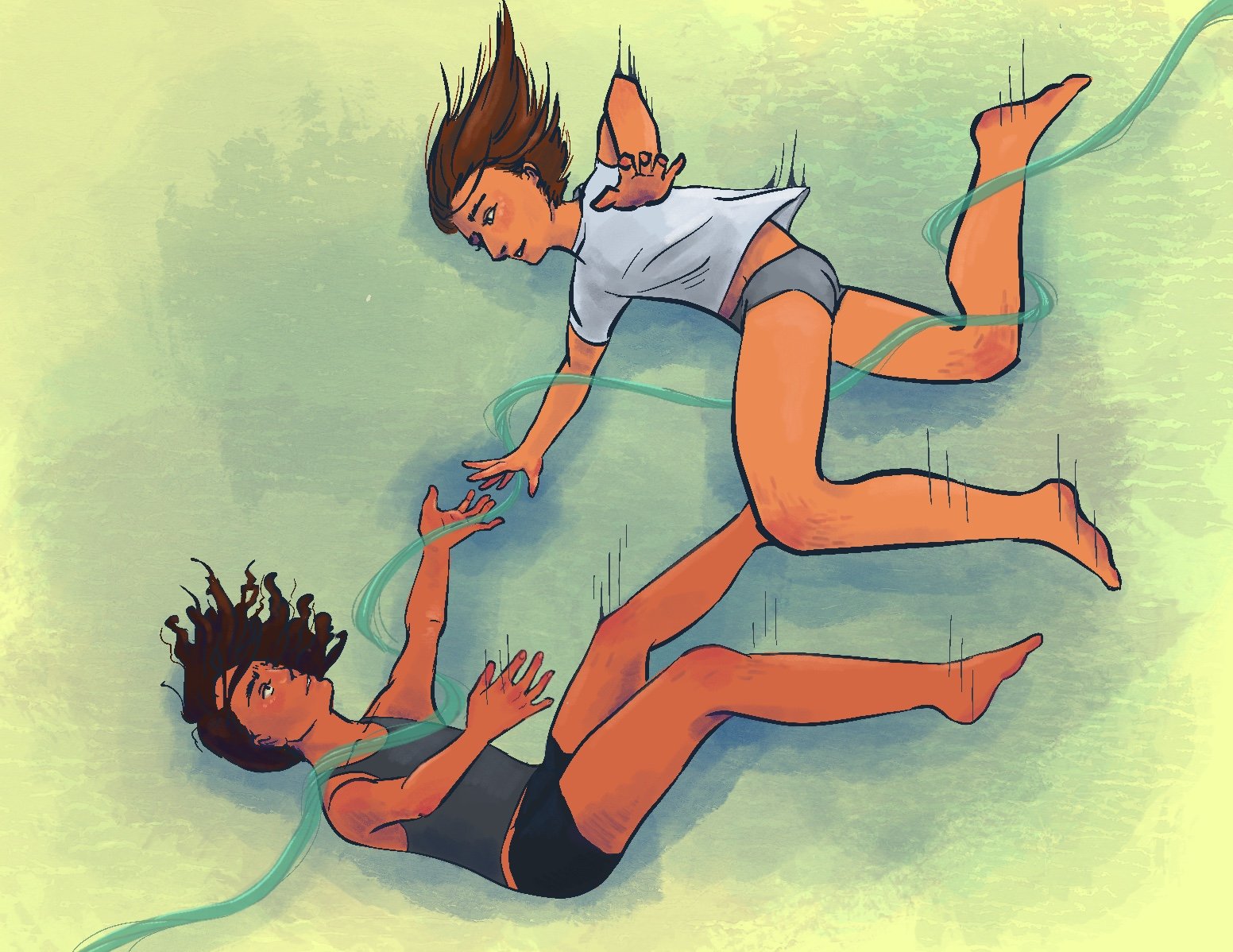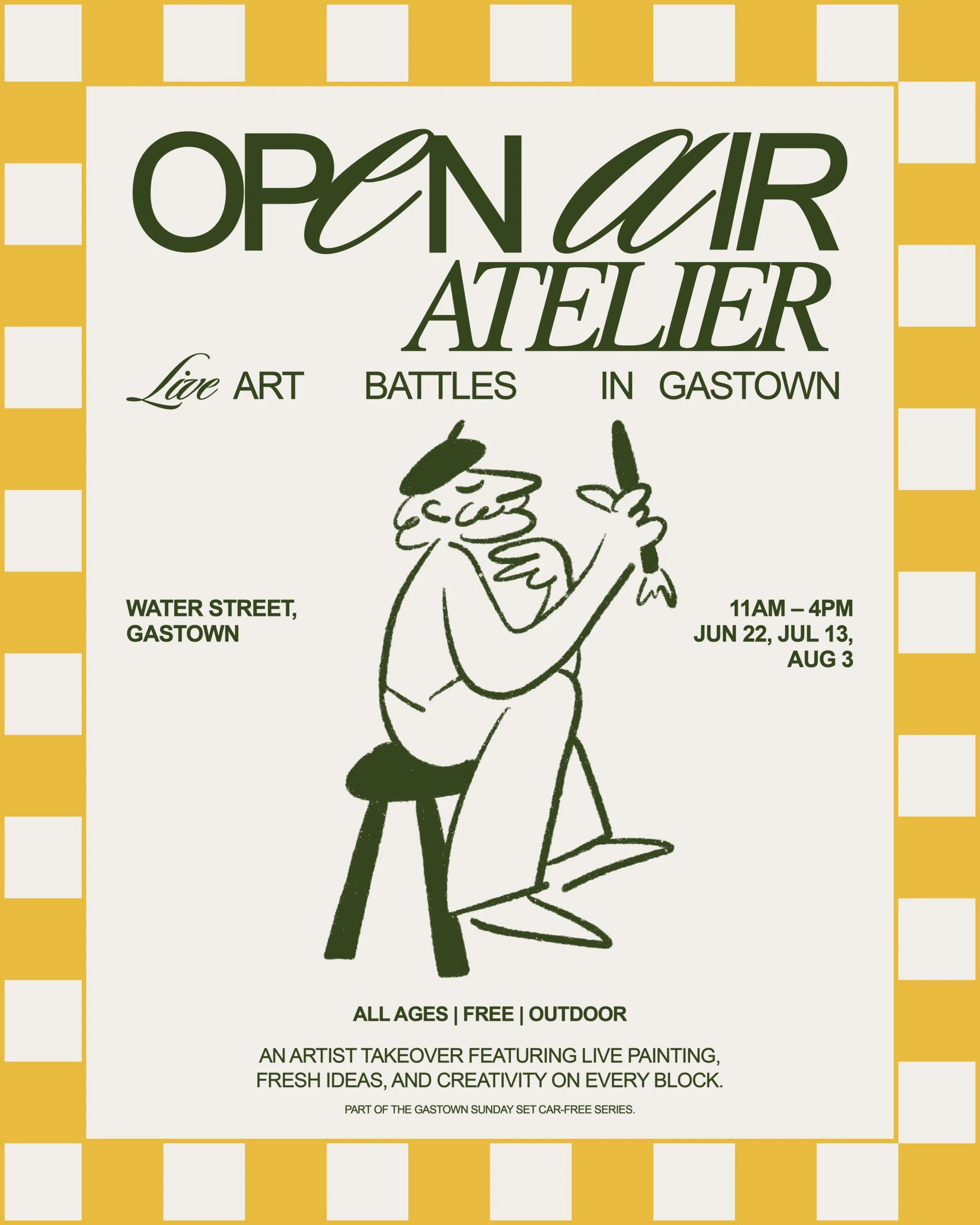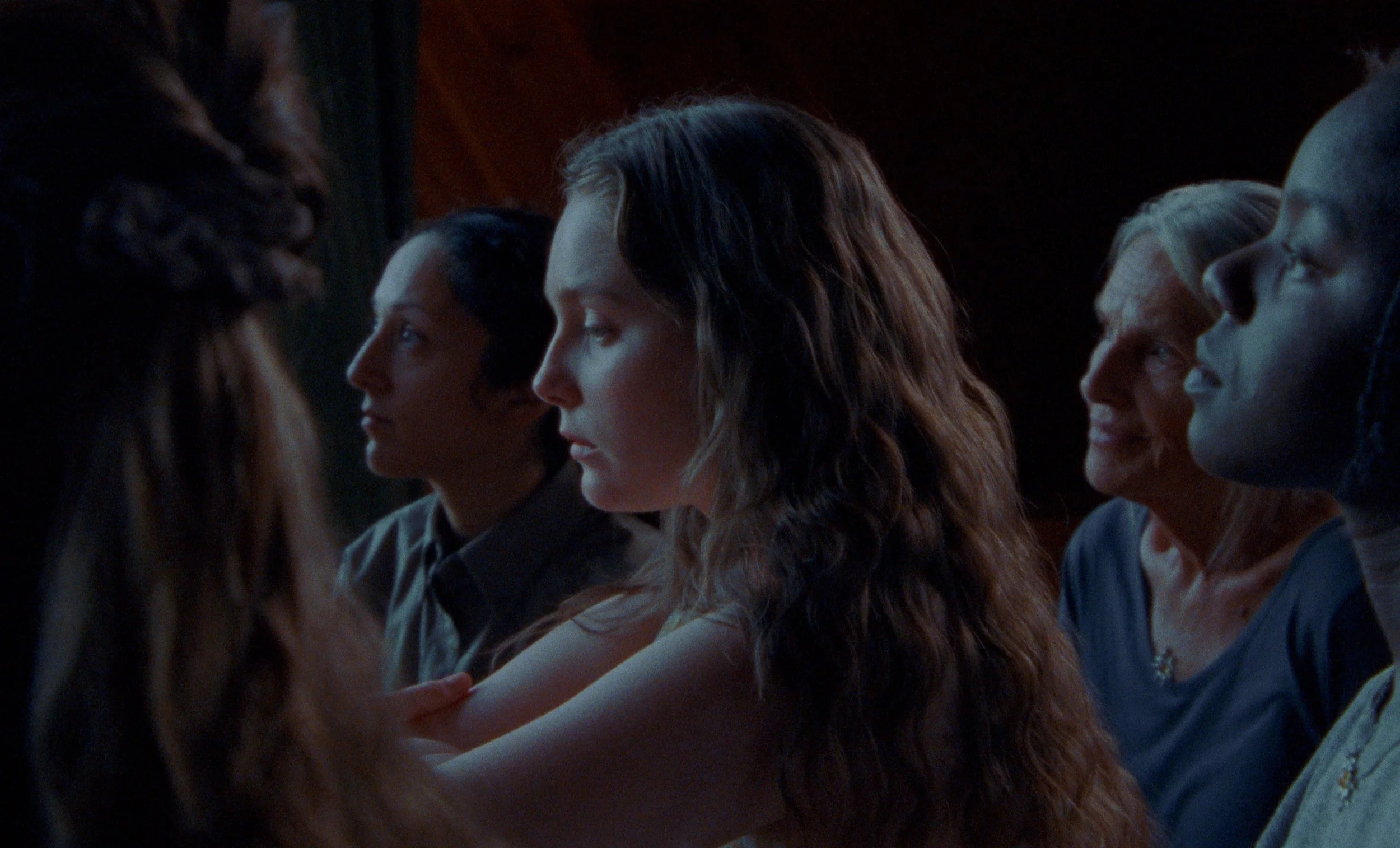The Potentialities of Queer Cree Love in Billy-Ray Belcourt's coexistence: A Testament to Queer Indigenous Lovers Everywhere
/"i'm prepared to be devastated by you," illustration by dana justine belcourt
As a queer Indigenous person, it’s rare to come across books that I resonate with. Billy-Ray Belcourt’s (Driftpile Cree Nation) books have been profoundly important to me for this reason. Belcourt’s writing has made me feel seen in ways I did not know were possible in the constraints of conventional publishing houses. His recent collection of short stories titled coexistence–featuring many queer Cree narrators and characters from Northern Alberta–not only enriches but also weaves together his previous work in its exploration of loneliness and its embrace of care and love. In coexistence, Belcourt alludes to characters from his earlier writings, such as Jack and the unnamed narrator of A Minor Chorus. The transcendence of character across Belcourt’s publications–ranging from already formally unconventional memoir, poetry, notes–is a cornerstone of Belcourt’s genre-bending writing style; moreover, it also immortalises the very people that colonisation continues to murder and make invisible. This transcendence is an anti-colonial act of care. Belcourt’s coexistence enshrines and maps the excess of queer Indigenous life, specifically queer Cree life, through interweaving abundant affects and queer Indigenous geographical excess.
At Belcourt’s book launch in Winnipeg this May, he challenged the mainstream belief that creative writing is separate from the author’s life while also navigating and problematising the tendency to label BIPOC authors’ fiction as memoirs. Belcourt adds nuance to this tendency–a problematic practice rooted in racist biases–and identifies the desire to separate the writer from their writing as a desire for positivism, which is the belief that everything must be proven through logic rather than experience. Positivism is an ideology that researchers use to discount lived experiences, and therefore, BIPOC researchers frequently refuse this philosophical standpoint. Belcourt rejects easy access to his texts and their multiplicity of meaning by queering genre and form as a way to deny the colonial deconstruction of a text, and his new collection is no different. In coexistence, Belcourt speaks across his texts (one can access the text without knowing the previous worlds he has built, but knowledge of these works provides depth) and blends non-traditional forms into the collection–such as fictional auto-theory and diary entries. In all of this, Belcourt critiques the imposition of white positivism in literary criticism by acknowledging the influence of his personal experiences as a queer Cree man without reducing it to mere autobiography.
In the story “outside,” Belcourt writes his first straight, cisgender couple. While this couple may be sexually straight, I would argue that they are socially queer. As many people have argued elsewhere, including Jodi Byrd (Chickasaw) in their article “What’s Normativity Got To Do With It?”, Indigenous people are queer in settler colonial society because settlers created this society without us in mind; settlers created this society from our disappearance. In “outside,” the straight cis Indigenous couple’s reunion after Jack’s release from prison–an infrastructural symptom of settler colonialism set on erasing Indigenous people and Black people–is queer. The title of this story, “outside,” is a homonym–insinuating being physically outside of prison, the feelings of displacement from society that one experiences afterward, and being “outside” of the heteropatriarchal nuclear family unit. The narrator says, “When they kissed Jack truly felt outside. Inside, outside, these were now the terms that shaped his reality. One could be outside but still inside. Lucy was his new outside” (118). Being outside but inside indicates the isolation the prison industrial complex produces; yet, in response, Jack turns towards Lucy and her needs and navigates his masculinity with sensitivity. The phrase “Lucy was his new outside” is not only a refusal of Jack’s heteromasculinity and the societal expectation for him to turn inwards, but it also challenges the confines of the nuclear family unit by invoking the colonial “inside” space of the prison and the safety of Indigenous love “outside.” For example, the story articulates the all-too-common reality of prison for Indigenous peoples in relation to the nuclear family; time in prison makes the construct of the nuclear family inaccessible. However, Lucy also refuses the nuclear family by making light of Jack’s time in prison; it is not central to their relationship as it may be in nuclear family dynamics. Lucy does not treat Jack differently for his time “inside,” because the prison industrial complex is an unfortunate facet of the everyday for Indigenous peoples. In light of this, their relationship holds a weight, not only as the embodiment of Indigenous love but also as an Indigenous love that understands the ongoing effects of colonisation. The story’s title plays with dual meanings, evoking physical and emotional displacement and placing their relationship outside nuclear family dynamics.
Throughout the collection, Belcourt employs rich geographical metaphors that underscore the profound relationship queer Indigenous peoples, particularly Northern Alberta Cree, have with their lands; these metaphors not only enrich queer Indigenous lifeworlds but also critique outsider perceptions of Indigenous people as static, archetypal figures devoid of contemporary complexity. There is a risk in romantically talking about the land as Indigenous peoples because Indigenous peoples are often mapped onto nature as ‘primitive,’ such as through the ‘Noble Savage’ stereotype. The ‘Noble Savage’ stereotype associates Indigenous peoples directly with the land, implying an innate goodness of a ‘primitive’ people living in harmony with nature. Non-Indigenous people often fail to understand the capacious relationship Indigenous peoples have with the land and instead map us into ‘Noble Savage’ archetypes, objectifying us further. However, Belcourt illustrates how queer Indigenous peoples challenge this stereotype through our queerness because we refuse the split between Nature and Culture employed in ‘Noble Savage’ rhetoric. In Belcourt’s collection, men grind on each other, and the narrator “think[s] about a river crashing against the riverbanks, about how euphoric it is to exceed your outer limits” (25). This gay land metaphor exemplifies the impossibility of uncoupling nature from culture as queer Indigeneity is mapped directly onto the land. Nature is not a floating signifier, but rather, it grounds our lives and politics, especially for Indigenous peoples. In this collection, queer Cree professors feel displaced in Geography buildings, and theory in that academic space refuses to stretch toward the relation queer Indigenous people have with the land. These metaphors enrich Belcourt’s narrative of queer Indigeneity and critique violent, colonial perceptions of Indigenous peoples.
In “my diary,” Belcourt further delves into themes of queerness and land, exploring the complexities of Indigenous identity shaped by colonial histories. The narrator’s introspective journey reflects on his detachment from his ancestral lands and the yearning to reclaim a queer identity that is intertwined with geographic belonging. The narrator writes, “Whenever I write ‘homeland’ I see the ghostly possibility of the non-word ‘homoland.’ I wish my homeland was queerer… I’m back now to imbue the landscape with whatever queer currents I can muster. Is it possible to be a singular person and alter the current of a whole landscape, make it queerer?” (130). The narrator transposes his body within the ancestral lands from which he comes, queering the landscape with his body and finding the landscape within himself as well: “It wasn’t until I was an adult that I learned that where I was from was in the subarctic. The knowledge clarified something for me, that I was a product of a geologically specific region… Part of me would always be someone whom the cold drove inward” (136). When he initially travels back home to Alberta, the narrator feels wholly isolated but this later shifts to belonging alongside that isolation.
Homeland becomes homoland by spewing the excess that queerness has to offer in the narrator’s biological entanglement with the land while also articulating the limits of this excess by illustrating the hauntings of colonisation on the rez. Queerness is excessive, especially on the rez, where our queerness is often snuffed out and where the legacy of white Christian missionaries and colonisers attempting to exterminate us all-together lives on. In “my diary,” Belcourt plays with this excess by having the narrator invite a Cree man, who lives a heteronormative lifestyle, to have sex at his house. After this event, in a place where the homophobic violence of colonisers continues to be perpetuated and exist, the narrator looks up at the stars and reflects on the animals bustling with life, “In bed with T, I felt dense with the desire to live longer” (145). When the narrator illustrates the livingness of the land surrounding him and his lover, he emphasises that our land wants us to live and this is rooted in our sexuality. Reading this story as a queer Indigenous person who did not grow up on their ancestral lands was mind-altering because it illustrates that as queer descendants of displacement, our bodies and ourselves are deeply connected to our land; we are disconnected from our land when we are not on it. If we do not spend time on that land, we cannot see ourselves in our land and, therefore, in and with our community. However, as this story shows, even though these connections with land are foundational to who Indigenous peoples are, the hauntings of colonisation also continue through the settler occupation of our lands.
Having collaborated with Billy-Ray in my own research, I’ve experienced firsthand his commitment to extending love and care to everyone he works with. This generosity is rare in academia and publishing and therefore, must be noted. By reading this book, you support someone who cares deeply for queer Indigenous communities, and you engage in his care work. Billy-Ray Belcourt’s work not only offers refuge for queer Indigenous peoples but also challenges mainstream literary norms with its innovative form and profound thematic explorations. Belcourt’s writing is a testament to queer Indigenous communities, offering a hopeful vision of relationality that transcends the isolation of settler colonialism. As Billy-Ray Belcourt states, “to be in a relationship with a non-Indigenous person [takes] work” (54). Rather than wading explicitly into the loneliness of non-Indigenous and Indigenous queer relationships in this book, Belcourt gives us hope through queer Indigenous relationality and refusing the plight of settler colonialism.
Hann Scurlock (they/them) is a Two-Spirit citizen of the Chickasaw Nation (Keel, James, and Pickens descendent), a PhD student in the University of British Columbia’s English Language and Literatures department, and an avid bead worker. They research queer Indigenous studies, Native American-Black relationalities, and “otherwise” ecocriticism. Follow them on Instagram and X (@hannlikepan) and their work on substack: https://aqueerchickasaw.substack.com
Dana Justine Belcourt (They/She) is a multidisciplinary mixed Cree/Métis artist from Amiskwaciwâskahikan, specializing in paintings, zines, and murals. Their work deals with themes of love, indigeneity, and relationships through symbolism, metaphors, and narratives. Their paintings tend to be focused on specific emotions and personal stories, while their murals and public pieces are often commemorating community experiences. Their zine work allows them to showcase their writing and journaling practice, which is emotive and sentimental. Overall, their pieces are highly personal, including small details and nuances which are elusive and secretive in nature. They hope for their work to be a lens into themselves, allowing others to see how they experience the world.
They’ve recently exhibited at Latitude 53 (2022), Emily Carr (2022, 2023), and Sâkêwêwak (2022), as well as completed murals in Edmonton (2021), and Vancouver (2022). They’re currently practicing on the unceded territory of the xwməθkwəy̓ əm (Musqueam), Sḵwx̱wú7mesh (Squamish), and səlilwətaɬ (Tsleil-Waututh) Nations. They completed a BFA at Emily Carr in 2023, and are currently an artist in residence at Skwachays Lodge. Follow their work on Instagram (@dana_belcourt) and at their website: https://danabelcourt.com/.






